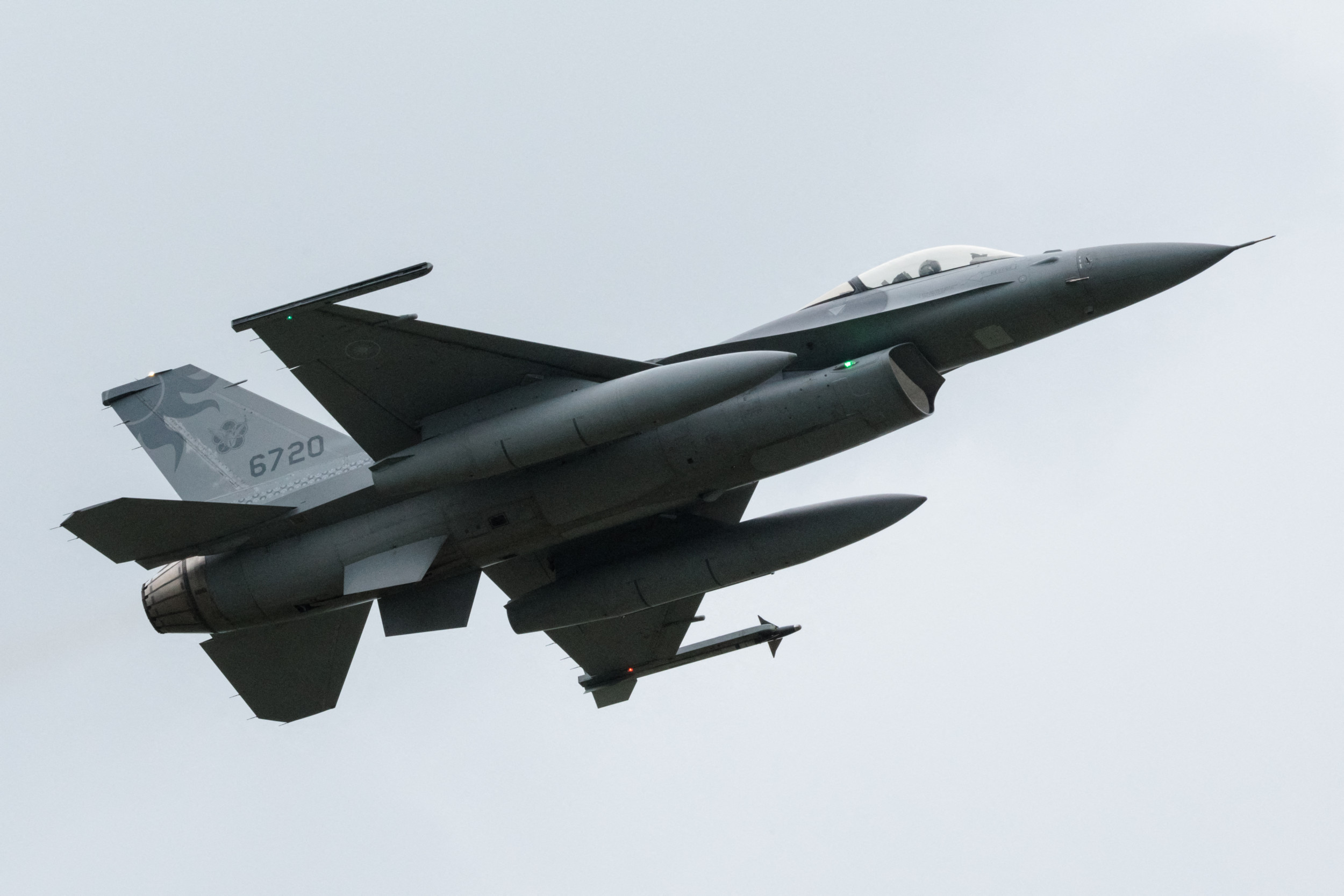The United States has delivered the first advanced F-16 fighter aircraft to Taiwan, a self-governed island that is threatened by its powerful neighbor, China, with the use of force.
Newsweek has emailed both the Chinese defense and foreign ministries for comment.
Why It Matters
The Chinese Communist Party has claimed that Taiwan is part of its territory, despite never having ruled it, and has vowed to “unify” it, through force if necessary. Beijing has intensified its pressure campaign to undermine the island, including military deployment.
While the U.S. has maintained an official relationship with China since 1979, it has been supplying Taiwan with “defensive arms” in accordance with the Taiwan Relations Act. Washington’s envoy has claimed that the island is the focus of the Trump administration.
The delivery of the F-16C/D Block 70 fighter jet comes after Elbridge Colby, President Donald Trump‘s nominee for Under Secretary of Defense for Policy, suggested Taiwan spend more on defense, closer to 10 percent of its gross domestic product (GDP).
What To Know
According to photos published by Republican Representative William Timmons of South Carolina on Facebook, the delivery was held on Friday at Lockheed Martin‘s Greenville site in the state, which is the home of the F-16 production, according to the defense contractor.
“We are so proud to be the global home of the F-16 and to support Taiwan’s air defense capabilities … Today has been years in the making, and signifies our commitment to democracy, freedom, and peace through strength,” the congressman wrote in the post.
The Taiwanese Defense Ministry confirmed the delivery; the island has requested to purchase a total of 66 F-16 jets in a weapons sale approved in 2019 during Trump’s first presidency. It is expected that all the fighter jets will be delivered by the end of next year.
The Taiwanese air force is operating a fleet of the upgraded F-16A/B fighter jets, which has been actively defending the country’s airspace by intercepting Chinese combat jets that approach the island, including unmanned aircraft and carrier-based fighter jets.
According to Taiwan’s Central News Agency, the F-16C/D Block 70, also known as the F-16V, is capable of producing more thrust and thus enabling it to carry more weapons.
The F-16C/D Block 70 is equipped with an engine that has 29,000 pounds of thrust, while the existing, upgraded Taiwanese F-16A/B jets, of which there are over 140 aircraft and which were refurbished to the F-16V standard, have 23,000 pounds of thrust from their engines.
YASUYOSHI CHIBA/AFP via Getty Images
China flew its next-generation J-36 fighter aircraft twice this month. Lockheed Martin has claimed that the F-16C/D Block 70 aircraft is the “most advanced fourth-generation fighter ever built.”
The Lockheed Martin is equipped with an advanced radar known as the APG-83, which provides the radar capabilities of the fifth-generation combat jet, the predecessor of the next-generation fighter aircraft, enabling the so-called “quicker all-weather targeting.”
What People Are Saying
Republican Representative William Timmons of South Carolina wrote in a Facebook post on Friday: “Lockheed Martin is delivering mission-critical capabilities to Taiwan with 66 new production Block 70 aircrafts, along with Taiwan’s F-16 Viper upgrade program.”
The U.S. Defense Security Cooperation Agency said in a press release on August 20, 2019: “This proposed sale [of 66 F-16C/D Block 70 fighter jets to Taiwan] will contribute to the recipient’s capability to provide for the defense of its airspace, regional security, and interoperability with the United States … The proposed sale of this equipment and support will not alter the basic military balance in the region.”
Liu Pengyu, spokesperson for the Chinese Embassy in Washington, D.C., previously told Newsweek on March 2: “The Taiwan question is purely China’s internal affairs and the core of China’s core interests. No external interference is allowed.”
What Happens Next
It remains to be seen whether Taiwan will request to buy additional fighter jets from the U.S., as China is enhancing its air power with the largest aviation force in the Indo-Pacific region, with over 3,150 aircraft, including its first fifth-generation jet, the Chengdu J-20.


